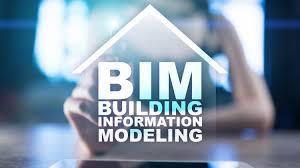BIM means Building Information Modeling. It is a way to create and use digital building data. Many people see BIM only as software. Some see it as a broad technology that drives the whole process. This mix-up causes confusion in projects and teams. The truth is, BIM is both, but in different ways. Knowing the difference helps architects, engineers, and contractors work better. It also avoids wasted effort and wrong expectations. For the construction industry, clarity on this point is key. It decides how well BIM supports design, building, and future maintenance.
Origins of BIM
Construction once relied on hand drawings. Every line on paper guided design and site work. Later, CAD replaced pencils with digital drafting. It allowed faster edits and cleaner details. Still, it stayed limited to 2D or basic 3D views. Then came BIM, offering a richer model with data linked inside. Early users treated it as advanced software, not a bigger shift. This narrow view made many think BIM equals tools. Digital adoption fueled the mix-up. As new platforms grew, the industry tied BIM closely with software names, not with the wider process behind it.
BIM as Software
When people say BIM, they often mean the software tools. Programs like Revit, ArchiCAD, Navisworks, and Tekla lead this space. These tools allow teams to build detailed 3D models of projects. Each model holds data about materials, size, and schedules. The software can spot clashes between designs before work starts on-site. It also helps teams share updates in real time. Coordination becomes easier when everyone sees the same model. BIM software cuts errors and reduces delays. It saves time and lowers rework costs. For daily tasks, it is a vital helper. Still, BIM as software covers only part of the bigger picture in construction.
BIM as Technology
BIM as technology goes beyond single tools. It is a full system that joins people, data, and methods. It works through shared standards and clear processes. Teams follow rules for how data moves across each stage. Cloud platforms now allow instant access to models from anywhere. AI adds insights by predicting risks and improving choices. IoT devices feed real data from buildings back into the system. This makes BIM a living network, not just a design tool. The focus shifts from drawings to the entire project lifecycle. From design to construction to facility care, BIM technology keeps data connected. It ensures buildings run smarter, safer, and more cost-effective long after the project ends.
Key Differences: Software vs Technology
BIM software and BIM technology serve different purposes. Software is the tool. Technology is the system.
- BIM Software: Revit, ArchiCAD, Navisworks, Tekla.
- BIM Technology: Processes, standards, and collaboration frameworks.
- Software Role: Create models, check clashes, improve accuracy.
- Technology Role: Guide workflows, link data, support lifecycle decisions.
- Software Outcome: Better designs and fewer site errors.
- Technology Outcome: Efficient projects, lower risks, and smarter long-term management.
Think of it like this: software is the engine. Technology is the full vehicle. One cannot run without the other.
Why the Confusion Exists
Many people confuse BIM with software because of how tools are sold. Software firms market their products as the full BIM solution. This shapes views in the industry. Another cause is limited awareness in many AEC teams. They often use BIM only for modeling tasks. The term “BIM” is also misused in daily talk. People say BIM when they mean one program. This adds to the mix-up. Clarity is vital for professionals. Without it, teams expect too much from tools and miss the bigger value of BIM as a technology-driven system.
How Professionals Should View BIM
Professionals need the right mindset about BIM. It is both software and technology, not one or the other. Tools provide the platform, but processes give direction. Workflows, standards, and shared rules keep projects aligned. Collaboration is the heart of BIM’s value. For example, clash detection works well with software, but it works even better when teams follow agreed rules. Firms should avoid thinking a license means full BIM adoption. The real value comes when tools link with methods and teamwork. Start small with clear standards, then scale to bigger goals. This way, BIM supports cost savings, smoother delivery, and better building performance.
Future of BIM – Beyond Software
BIM is moving into a new phase. Digital twins allow buildings to have virtual copies with real-time data. AI tools now predict risks, improve planning, and support smart choices. Cities also look at BIM for growth into smarter, safer spaces. Sustainability is another key driver. BIM supports energy checks, material tracking, and low-carbon design. These features help reduce waste and save resources. Data-driven construction will rely on BIM as the main source of truth. From early design to future maintenance, BIM links every stage. The path ahead shows BIM as more than software. It will serve as the backbone of modern infrastructure worldwide.
Conclusion
BIM as software and BIM as technology are not the same. Software gives tools to design and manage models. Technology adds processes, standards, and collaboration that guide projects across their full lifecycle. Professionals should not see BIM as just a program on a screen. The real value appears when teams use it as a system that drives smarter choices. BIM as technology supports greener designs, safer sites, and stronger buildings. Adopting BIM fully means more efficient work today and smarter infrastructure tomorrow. The future belongs to those who look beyond tools and embrace BIM as a complete approach.
- BIM as Software or BIM as Technology – Clearing the Confusion
- Is BIM just software or a full technology system? Learn the difference, why confusion exists, and how professionals should view BIM for smarter projects.
- BIM software, BIM technology, BIM process, Building Information Modeling, BIM in construction, clash detection, digital twins, AEC industry
Related posts:
 How Cloud Cover Helps Optimize Efficiency in Solar Energy Systems
How Cloud Cover Helps Optimize Efficiency in Solar Energy Systems
 Why You Should Hire iOS App Developers in india from Quytech
Why You Should Hire iOS App Developers in india from Quytech
 Precision at the Core: Why Cairo’s Industries Rely on LVDT Sensors
Precision at the Core: Why Cairo’s Industries Rely on LVDT Sensors
 White Label Development Services Empowering Your Business with Scalable Solutions
White Label Development Services Empowering Your Business with Scalable Solutions
 Nature’s Best in Every Dose – Globalayucare Herbal ,Go Herbal, Go Global – With Globalayucare!
Nature’s Best in Every Dose – Globalayucare Herbal ,Go Herbal, Go Global – With Globalayucare!
 Top 5 Reasons WhatsApp Support Teams Need Monitoring Software
Top 5 Reasons WhatsApp Support Teams Need Monitoring Software
 Why Reliable Server Support Is Critical for in UAE Businesses
Why Reliable Server Support Is Critical for in UAE Businesses
 Stumped at Tech Interviews? These Machine Learning Engineer Questions Might Be Why
Stumped at Tech Interviews? These Machine Learning Engineer Questions Might Be Why




